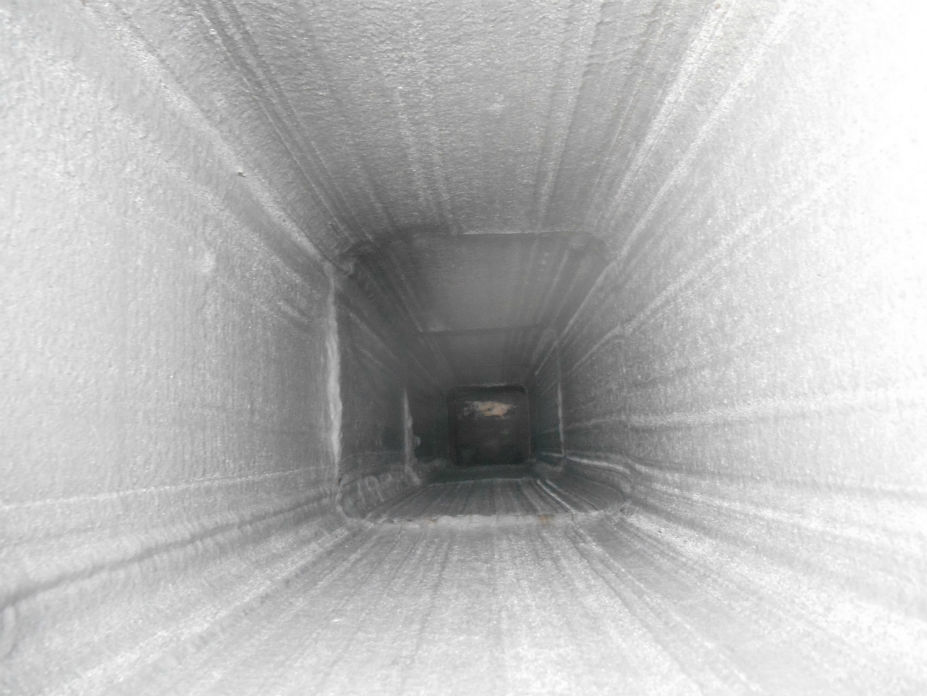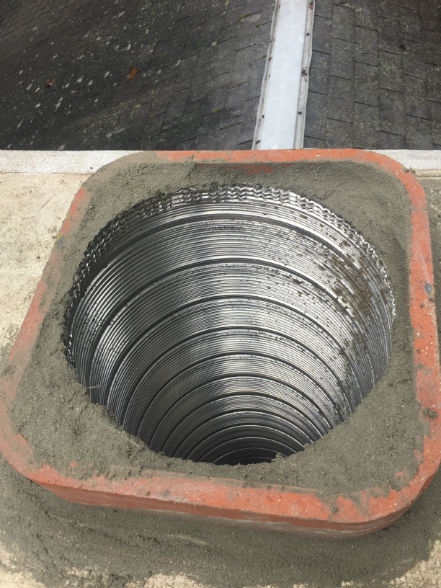When it comes time to make major chimney repairs, like relining your chimney, regardless of the appliance it’s time to start thinking about your goals.
How do you want to use your system?
How much work and time do you want to put in when you go to enjoy a fire?
How often do you plan on using your appliance?
Will you be using it for heat or is it more for ambiance?
Do you want the most efficient option or is that not a high priority for you?
The answers to all of these questions matter, and you should take the time to consider each before you make any decisions regarding which relining system to invest in.
Because the truth is, there is no “best option.”
The best option for one person might be a terrible option for you.

It all depends on your lifestyle, your plans for the future of your appliance and home, and your goals.
For example, do you want to invest $5,000-$7,000 in a new liner system for your open fireplace when, for a little bit more money, you could install a gas fireplace or woodstove, and have something that creates more heat, more efficiency, and is less work to operate and enjoy?
Maybe for you, the answer is yes. Maybe it’s no.
But if you don’t ask yourself the right questions and the chimney professional you work with doesn’t ask, you could end up investing in something that doesn’t make any sense for you and your home.
That said, there are some basic rules of thumb when it comes to each type of liner system and when you might want to choose one over another. Each has different price points, and each has its limitations. If you’re definitely going to use your system as an open fireplace, there are three liner options to consider:
Stainless steel.
Stainless steel liners are heat and rust resistant and can be great options when you need a completely new liner or when your chimney is unlined.
When you reline with stainless steel, an insulated stainless steel liner is slipped down into the flue.
Sometimes, stainless is your only option or is the most affordable option.

Other times, you need to remove the terra cotta liner in order to install and properly insulate the stainless steel liner, and you don’t have enough room to properly do so.
In these situations, stainless steel isn’t an option and you need to go with a poured liner system, a refractory liner system, or an appliance with a smaller discharge (i.e. a gas fireplace or woodstove) so you can install a smaller stainless steel liner system.
There are different grades of stainless steel, so it’s important to know not just what type of appliance you have, but also what type of appliance you plan on having in the future. With venting gas appliances, you’ll typically want to use small aluminum or 316 stainless steel liners. With woodburning appliances, if you opt for a metal liner, you must use a 321, 316, or 304 stainless steel liner.
Poured liner system.
Poured liner systems are great when you need to have the entire flue resurfaced or relined.
This process entails removing the terra cotta tiles and placing a long rubber sleeve down in place of the flue liner. This sleeve is then inflated to a certain PSI based on the size of the firebox.
Once the liner is insulated, a super fireproof cement is pumped around the sleeve from top down. Once it gets to the top, it’s sealed off, and 24 hours later the sleeve is deflated.
Then, if it’s for a fireplace, the smoke chamber is parged out. Note: We do not offer poured liner systems, but we can recommend someone who does if this is the best option for you.
Cerfractory liner system.
In the sense of being high heat resistant/fireproof, a cerfractory liner system is similar to a poured liner system.
However, these systems are different in terms of how and when they’re installed.
A cerfractory liner system is a great option when you just have cracks in the liner or missing mortar joints. This two-point process involves first filling the cracks, gaps, and separations.
Once that dries to a smooth parge coat, a second coat gets applied from the bottom all the way to the top. The result is a semi-smooth parged liner system that keeps everything sealed and contained in the unit.
Thinking Of Relining? Make Sure Your Chimney Professional Asks The Right Questions
As you can see, there isn’t really a quick, one-size-fits-all solution when it comes to chimney liners.
This is why it’s so important for your chimney professional to interview you before making a recommendation. They should ask you what your plans are going forward and how you plan to use your appliance in the future, not just how you’ve used it in the past.
Knowing this allows your chimney professional to present the different options that make sense for you and help you make a better decision for your home.
Here at Clean Sweep of Anne Arundel County, our goal is to make chimneys healthy, and this is something we take very seriously.
We never go into a home with a sale in mind or recommend something that’s not right for our clients.
We even have clients who know they’re going to live in a home for another 10-15 years, but they don’t use their appliances. For them, we may go in and fix everything on the exterior of the chimney and seal the top of it so they don’t have an air leak. But if they’re not going to use their appliance, it doesn’t make sense for them to worry about fixing the inside until they’re ready to sell the house.
Of course, you don’t know unless you ask. So we always make asking questions a part of our service when recommending repairs and other maintenance.
Is it time to reline your chimney system?
Are you looking for expert advice to help you plan for major repairs or updates to your chimney and/or appliance?
Call Clean Sweep of Anne Arundel County or reach out to us online and we’ll be more than happy to help you parse through the options and make a decision with confidence. That’s what we’re here for!
